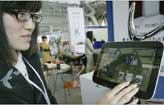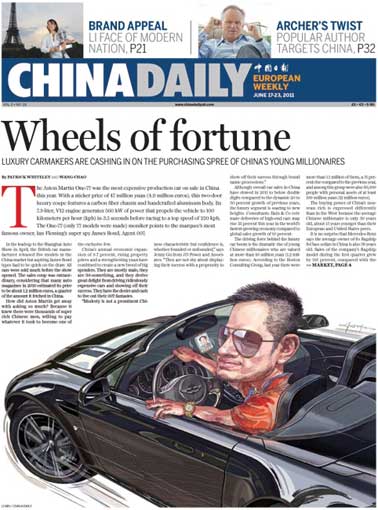Op-Ed Contributors
Easy switch for better energy efficiency
Updated: 2011-06-16 07:54
By Joe Hogan (China Daily)
You might use one to dry your hair or wash your dishes. There's one in every elevator and ventilation system. And in industry they run machines, pumps, fans, conveyors and more. I'm talking about electric motors. They are quite literally everywhere and they use a lot of energy.
In fact, they are the single biggest consumer of electricity. They account for about 45 percent of global power consumption, according to a new analysis by the International Energy Agency (IEA). Lighting is second, at 19 percent.
The IEA analysis is startling. It means that every second power plant - more or less - is producing electricity for the sole purpose of running motors. In just 60 seconds, motors worldwide use enough power to meet the annual needs of 12,700 households in China.
Put another way, if you took all the electricity produced in every corner of the world from Jan 1 until June 16, you would have just enough to power the world's electric motors for 12 months.
The study is the first global analysis of energy consumption in electric motors and the other stunning fact it reveals is how much of the energy they use could be saved. Many motors are inefficient, oversized or running when they don't need to. The IEA says it is not only cost-effective, but also feasible, to save about 20 to 30 percent of total motor power consumption, which is 9 to 14 percent of all global electricity consumption.
Doubters may think that reaping such large benefits from motor system efficiency is simply too good to be true. However, the reason such a large potential exists, the IEA says, is that there are a variety of barriers that make the benefits difficult to capture.
These barriers show up clearly in a global survey of manufacturing executives conducted this year by the Economist Intelligence Unit on behalf of ABB. It found that 60 percent of manufacturers had not invested in improving the energy efficiency of their capital, plant and equipment over the past three years.
The executives cited a lack of a clear-cut financial case for energy efficiency investments, a lack of funds and a lack of information about energy efficiency options as the three main obstacles to greater investment in energy efficiency in their companies.
This is a surprise, given that motors account for two-thirds of the electricity used in industry, and that the annual energy cost of running a motor in industry can be as much as seven times its purchase price.
The IEA report will go some way toward raising awareness. It fills an important gap in the energy and climate debate by putting some hard facts on the table about an area where independent measurement and analysis have been lacking. But it also clearly points to the central role of policymakers in realizing the potential savings from electric motors: efficiency levels are highest where policymakers have been most active, such as in the US, Canada and China.
In this respect, June 16 marks a milestone for the European Union. On this day, measures to improve motor efficiency come into force in the region, which are expected to save 135 terawatt hours of electricity per year as of 2020. This is equivalent to the annual output of 22 nuclear reactors and represents a saving to industry in the EU of at least 12 billion euros ($17.34 billion) per year at current electricity prices.
As Germany prepares to close down all its nuclear plants over the next decade, measures such as these that result in a more efficient use of energy will play an important role in helping Europe's largest economy continue growing without facing power shortages.
The importance of motors is reflected in our language: When we refer to a country or industry being a "motor" of growth, we are highlighting their critical importance. The IEA report brings us back to the origin of that metaphor by showing us what a central role motors play in our economy. It's time to put them at the heart of our strategies for meeting energy and climate challenges as well.
The author is CEO of ABB Group.
(China Daily 06/16/2011 page8)
E-paper

Pret-a-design
China is taking bigger strides to become a force in fashion.
Lasting Spirit
Running with the Beijingers
A twist in the tale
Specials

Mom’s the word
Italian expat struggles with learning English and experiences the joys of motherhood again.

Lenovo's challenge
Computer maker takes on iconic brand apple with range of stylish, popular products

Big win
After winning her first major title, Chinese tennis star could be marketing ace for foreign brands
